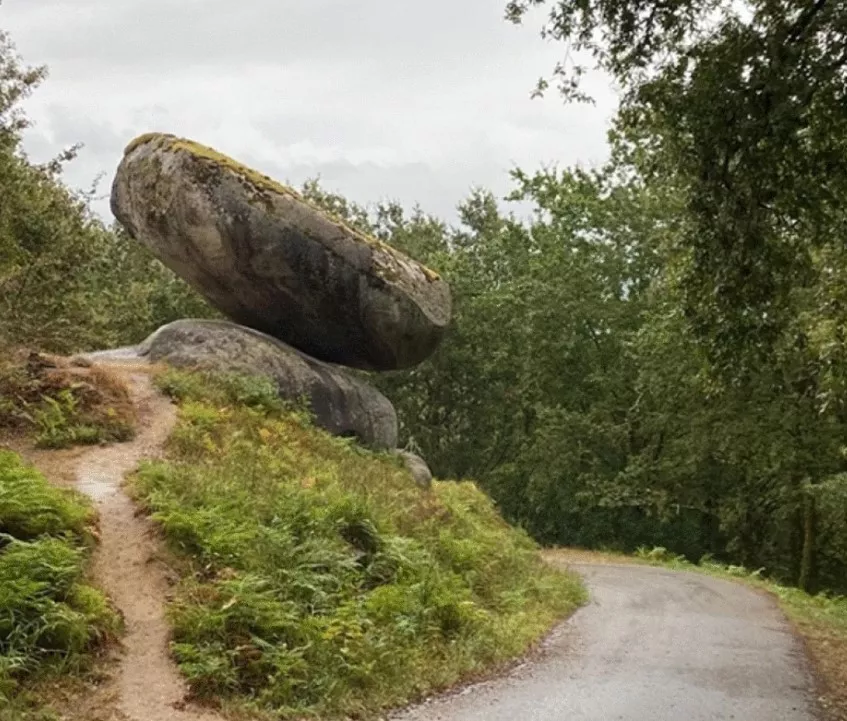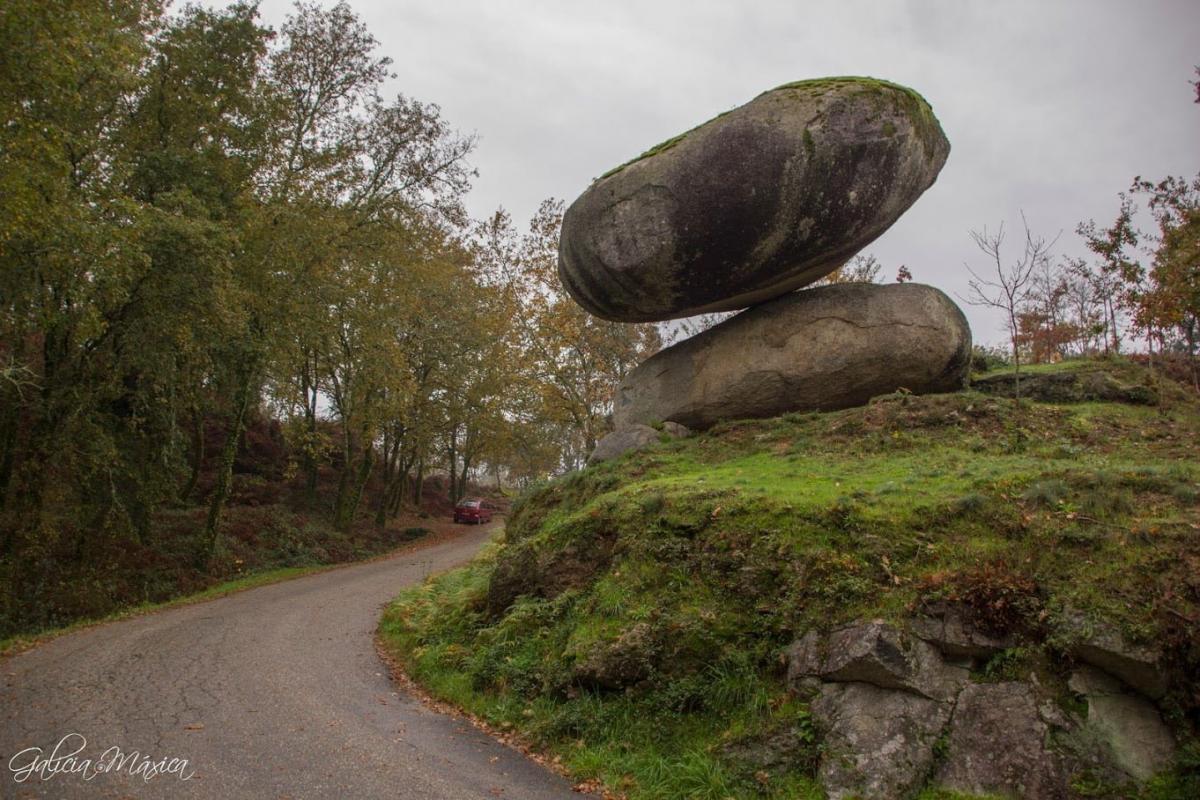News feed
How much can you sway a 360-tonne precariously balanced rock?
2024. 05. 15.The HUN-REN-BME Morphodynamics Research Group has developed a new method to investigate the stability of the 360-tonne balanced rock Pena do Equilibrio.
The BME researchers’ study has been awarded the Giovanni Barla Best Paper Award by Rock Mechanics and Rock Engineering, one of the leading journals in engineering geology. The award is only give to the best three or fewer papers each year.
The granite boulder in the Spanish province of Ponteverdra is a popular tourist attraction, so it is important to know how safe it is to be near it, yet quantifying this is not an easy task. “The on-site study, including the 3D scanning of the rock, was carried out by the Spanish co-authors. They reached out to Gábor Domokos, head of the Morphodynamics Research Group, to inquire what the scanned data can tell us about the stability of the precariously balanced rock. Since the digital data did not (and could not) include the contact surface, the software developed for the doctoral thesis of the lead author of the paper, Balázs Ludmány, assistant professor at BME’s Faculty of Electrical Engineering and Informatics, was needed to reliably estimate the shape of the rock. Unlike the previous, typically planar models, the new method takes into account all possible spatial movements of the rock. Earlier studies based on planar models may have significantly overestimated the factors of safety of the balanced rock. With the availability of the complete shape, we were able to carry out a much more detailed mechanical analysis,” said András Árpád Sipos, head of the Department of Morphology and Geometric Modeling at the BME ÉPK.

The central issue of the study was equilibrium and stability, but from this point of view, a scanned point-cloud contains only indirect information. Thus, a key question of the research was how to extract reliable information from point clouds. In recent years, Hungarian researchers have had to develop a very large set of mathematical tools, algorithms and software in order to create a tool that reliably solves practical problems. Such software in not yet in operation anywhere else in the world, which may have contributed to the prize, named after the Italian-born geoscientist Giovanni Barla, being awarded to the authors of the study.
|
The lead author of the article is Balázs Ludmány, who will soon defend his PhD dissertation at the Department of Control Engineering and Information Technology at BME’s Faculty of Electrical Engineering and Informatics, and one of his supervisors is Gábor Domokos, head of the research group mentioned above. The key author of the mechanical studies of the research project is András Árpád Sipos, Doctor of the Hungarian Academy of Sciences, who works at the Department of Morphology and Geometric Modeling at BME’s Faculty of Architecture, in addition to being a member of the HUN-REN-BME research group. |

“In addition to working remotely, just from the point cloud, we also asked questions that had not been addressed before by the Spanish experts. Such a rock block can move in many ways: it can roll down, slide down, or, for example, we can try to rotate it along an axis perpendicular to its support,” explained the leaders of the research group. The Hungarian colleagues also studied the impact of possible earthquakes, which made it clear that an average magnitude earthquake typical in the region would certainly not knock the rock block out of its place, but the strongest quake ever recorded in the area would likely do so. This is only likely because even though the magnitude of the quake is known, its direction is uncertain. And the fact that the 360-tonne granite block is still in place gives researchers an idea of the maximum magnitude of earthquakes that have occurred in the region in the past few hundred years.
“But more surprisingly, we have managed to find a trajectory along which a combined effort of just six muscular men could topple the boulder. This result can in turn have a fundamental impact on the safety measures implemented around the rock, which means that the clear benefit of the research is that we can probably avoid an accident,” summarised Gábor Domokos. The professor also highlighted another benefit of their study: geologists and planetary scientists are very interested in how the shape of rocks and pebbles can be used to infer the properties of, for example, former Martian rivers and their lengths or the properties of asteroids. However, the big challenge for them is that NASA does not yet provide three-dimensional data. Yet, in terrestrial conditions, countless three-dimensional point clouds of different rock formations can be generated and compared with two-dimensional data in space to draw further conclusions about non-terrestrial geological formations. The state-of-the-art software developed by the Hungarian researchers can also help in making such comparisons.
Read the full article at https://hun-ren.hu/hirek/lebillenhet-e-a-360-tonnas-ingoko-latvanyossag-haromdimenzios-pontfelho-segitsegevel
Source: hun-ren.hu
